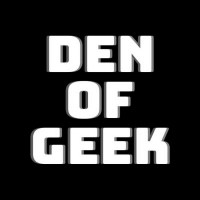IT: Comparing the book, the miniseries and the movie
Beep Beep! We weigh up IT across literature, TV and cinema...
Since its publication in 1986 Stephen King’s IT has been jangling the nerves and disturbing the sleep of readers across the globe. Then in 1990 a two part miniseries arrived boasting a truly horrific turn from Tim Curry as the petrifying Pennywise the Dancing Clown. It was very scary, and Curry’s blanched face, bright red nose and shock of hair became the definitive poster-image for Coulrophobia (fear of clowns) for an entire generation and more.
So when new film versions of the book were announced, to be told in two parts, fans were trepidacious. What could these adaptations add to the world of IT? What could they bring that would feel fresh, and how could they possibly create a Pennywise to rival Tim Curry’s? Turns out director Andrés Muschietti had some tricks of his own up his sleeve… IT arrived in 2017 to critical applause and became the highest grossing horror film so far (unadjusted for inflation).
The book, miniseries and feature film each have their own unique style, tone and draw. But how do they compare? We break down the details…
Changing times
All three iterations of IT feature two different time periods. The first when the bunch of misfits self-styled as The Losers Club are young teenagers, and the second decades later when they’re all grown up.
In the book, the gap between Pennywise’s attacks was 27 years with Pennywise’s first appearance set in the late 50s and his return falling in the mid 80s.
It was somewhat fitting then that Andrés Muschietti’s IT arrived in 2017, exactly 27 years after the 1990 miniseries. Spooky! Part one featured the kids in 1989 bringing with it shades of Donnie Darko and Stranger Things and of course a shout back to the era just after King himself wrote the novel. Part two will take place 27 years later with the Losers now adults in the present day, though there’ll still be flashbacks to the young gang in there too, mirroring the back and forth of the novel and the miniseries.
The miniseries tweaked the timelines slightly making the gap between Pennywise’s visits 30 years. The two parts were set in 1960 and 1990.
The Losers Club
Both the miniseries and King’s novel saw Mike Hanlon’s character narrating the circumstances of the now rebranded ‘Lucky 7’ Club (the Losers Club as adults), as he entices them back to Derry to deal with a post-hibernation Pennywise.
However, IT 2017 changed Mike’s backstory. Orphaned by a house fire and then oppressed by an overzealous uncle, his bolt gun becomes the gang’s weapon of choice against Pennywise, replacing the slingshot and silver slugs of the book. Most importantly, Mike appears to kill local bully Henry Bowers in self-defence in the movie, potentially rendering Bowers unable to take the blame for the death of the Derry kids as in the novel. Though how that pans out we’ll have to wait and see…
And how about the rest of the gang? In the book and the miniseries grown up Beverly comes back to town having just escaped from an abusive relationship, whilst poor old Stan Uris doesn’t make it back at all, instead deciding to end his life rather than head back to Derry. Super dark times for the adult Losers.
Meet… Pennywise
The miniseries’ biggest strength comes in a smudge of red and white face paint, courtesy of Tim Curry’s iconic turn as Pennywise the Dancing Clown. The tale’s antagonist is fear personified. He’s a catchphrase-heavy meme-machine, who has long-since transcended the 1990 incarnation. As such, he remains the biggest pull as well as the biggest gamble.
For Bill Skarsgård to step into, let alone fill, Tim Curry’s enormous clown-shoes is no mean feat, but it’s one he manages to accomplish with a distinct balance of malice and mirth. Skarsgård’s sewer-dweller is a giggly child-like apparition with wonky-eyes and a strong sense of the uncanny.
It’s difficult to imagine another horror which makes you want the villain to get nasty just as much as you want the victims to get away clean.
Turtle Power
The novel and the miniseries both featured the kids being scared stiff of classic movie monsters such as The Wolfman, The Mummy and the Creature from the Black Lagoon, as Pennywise embodied each Loser’s own personal fear.
The movie however opted for more contemporary and specific terrors. Mike is tortured by images of his parents in a fire, while Stan sees a scary painting in his father’s office come to life.King’s novel also featured an enormous cosmic turtle called Maturin who vomited the universe into existence (yes, really), so perhaps straying from the source material ever so slightly isn’t the worst thing in the world. Both 1990’s mini-series and Muschietti’s movie wisely avoided the reptile for fear of shell-shocking the audience – although the latter did throw in a Lego turtle and a blink-and-you’ll-miss-it reference mid-swim.
It speaks volumes for King’s story that, be it book, mini-series or feature film, IT still manages to be utterly compelling and deeply terrifying. The dancing clown has been preying on our fears for more than 30 years, and we haven’t seen the last of him yet…
